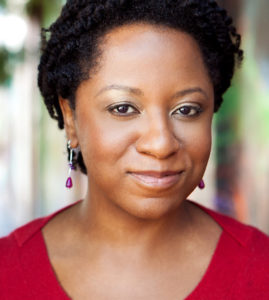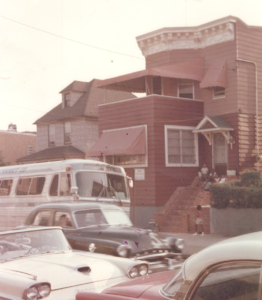At the height of the success of Louis Armstrong, it was a deliberate and conscientious decision for music lovers and consumers to purchase a record. Some still remember trekking to the nearest record store, sometimes by bus or trolley, with the intention of purchasing new music to carry home and listen to. Once upon a time, iPods were not a thing, nor were Spotify or Napster or any of the other formats of streaming music that have risen to enormous popularity.
When Louis Armstrong ruled the Earth, his fans had to use their hard-earned coins (sorry, kids, no NFTs or Venmo), and make it a point to invest in buying his music. This is not a fact lost on Regina Bain, the Yale graduate who is now Executive Director of the Louis Armstrong house in Queens, NY—the place where the New Orleans native relocated and nested with his wife, Lucille. The couple would live there until their respective deaths, his in 1971 and hers in 1983.
“People had to be so in love with that record that they moved hell and high water to get it wherever they could. You had to seek out a record. [Louis] Armstrong traveled to over 62 different countries and there is a deep history in each of those countries about him. There are people alive who still remember when they were very young and hearing Louis Armstrong play and to hear those stories, bring those artifacts. He loved the world and the world amazingly loved him and came out to see him through whatever the cultural barriers [were],” says Bain.
In 2023, a year where a simple Google search can return a plethora of Armstrong videos, music and articles, Bain considers his former house—adjacent to the Louis Armstrong Center just across the street—a homebase. For the record, the 14,000-square foot Armstrong Center houses a multimedia exhibit curated by Jason Moran; a 75-seat performance space (where Herlin Riley recently performed); and 60,000-artifacts in the Armstrong Archives. The archives contain the largest collection of any jazz musician and is one of the largest of any Black musician.
If there is one thing Bain shares with Armstrong, it’s “performance-ship.” Bain, originally from Florida, was a theater major at Yale, earning both her undergraduate degree and MFA from the prestigious program. She admits she was more of an R&B and gospel fan before Louis Armstrong and jazz came her way, but emphasizes she was always a fan of Black music, Black history, Black education and Black excellence, which ultimately paved her journey to the famous entertainer. “When I entered this space, I came with a spirit of curiosity—wondering what was it that inspired this institute with such passion. It was really about bringing all of my loves together with that same spirit of curiosity to this amazing legacy,” she explains.
When asked how an actor gets immersed in the realm of museum curation, Bain says it’s a transfer of energy of sorts. “I think of acting and the arts in general as being about listening to humanity, listening to other humans, listening to your own heartbeat—and then figuring out how to reflect that back to the world. Acting is about listening to your partner on the set and on the stage and bringing words to life. Acting is listening and attentiveness to the point of creation, something that I find to also be true in music. [I am not a musician, but] I like to watch musicians listen to each other. For me, it’s a straight shot thinking about acting and thinking about jazz in a museum curatorial space because they both require deep listening and transfers of energy.”
Perhaps a lesser-known fact about Armstrong—despite his prowess as a performer and at times, a peacemaker—is the way in which he diligently archived his own life. Armstrong left countless tapes, writings and more that give modern historians and fans a deep insight into a man who seemingly lived behind that impenetrable smile. “[It’s important to remember] he was a whole human being with an entire range of emotions, including rage. All the experiences that a Black man at the turn of century might have had in America also lived alongside the joy and laughter that was such a part of him. In our 60,000-piece archives, we have tapes where he recorded himself rehearsing, talking with friends, thinking about the world with his friends. He discussed the feedback and questions he received about whether this was such a ‘wonderful world’ given the issues surrounding him. I think he still believed it’s a wonderful world and chose that point of view. For whatever reason it was, he made that choice: joy…joy, as distinct from happiness. Despite the deep racism surrounding him, he chose joy.”
Bain hasn’t just worked in the theater space in a previous life. Her past work is with youth pursuing higher education opportunities and she isn’t shy about explaining why today’s young people should look to the past for inspiration. “Every generation finds a reason to look back.” She cites The Sankofa Principle, which generally postulates that one needs to look back in order to move forward. “[This principle] is definitely a part of African American diaspora cultures. We know that Louis Armstrong was one of the first to step up from the bandstand. The way he thought about timing was never done on that stage on his level. What he brought to popular music on a global level brought us to where we are now. Every contemporary musician, including pop musicians, owe a debt to the precedence that’s there. Wynton Marsalis dares his fans: ‘Just try and play Armstrong’s solos’ and you’ll find out what kind of excellence you can learn from Armstrong’s instrumental prowess.’ I say let the past surprise and inform you.There are wonders there to behold. We can’t find all the answers to all the problems we have now without looking back.”
In looking back, Bain seems to have found a friend in Mr. Armstrong. She insists on calling him “Louis,” out of respect for his own wishes. “We know in Hello Dolly that Armstrong says, ‘Hello Dolly, it’s Louis.’ Of course, he answered to ‘Louie’ and it’s not a negative thing to call him that, but he called himself Louis and his mother called him Louis. Out of respect for this ancestor, I call him by his full name.”
Spiritually, it seems like Mr. Armstrong appreciates this and Bain is receptive to the notion that his very strong presence remains somewhere in the brick house at 107th Street and 34th Avenue in Queens. After all, what would a New Orleans feature be without asking if a place is haunted? “If you talk with some members of our team, they will tell you ghost stories about the house, let’s just put it that way! I think that his spirit was huge! Lucille Armstrong’s spirit was huge [in her own right] and that’s why we are still here. Because the reverberations of their energy echo so far into eternity.”
The Louis Armstrong House and Museum are located in the northern part of Queens, New York City, near LaGuardia Airport. As parking is limited in the residential neighborhood, it is advisable that visitors take the 7 Train to 103 St-Corona Plaza. Information about the museum hours and more is available here.
The public can access the free digital archives of the museum at any time by visiting https://collections.louisarmstronghouse.org/search-results . To search New Orleans-centric items in the database, simply enter “New Orleans” into the search function.
Before you visit the Louis Armstrong House and for a trip down memory lane, revisit OffBeat’s Top 10 Versions of ‘What a Wonderful World’ now!






